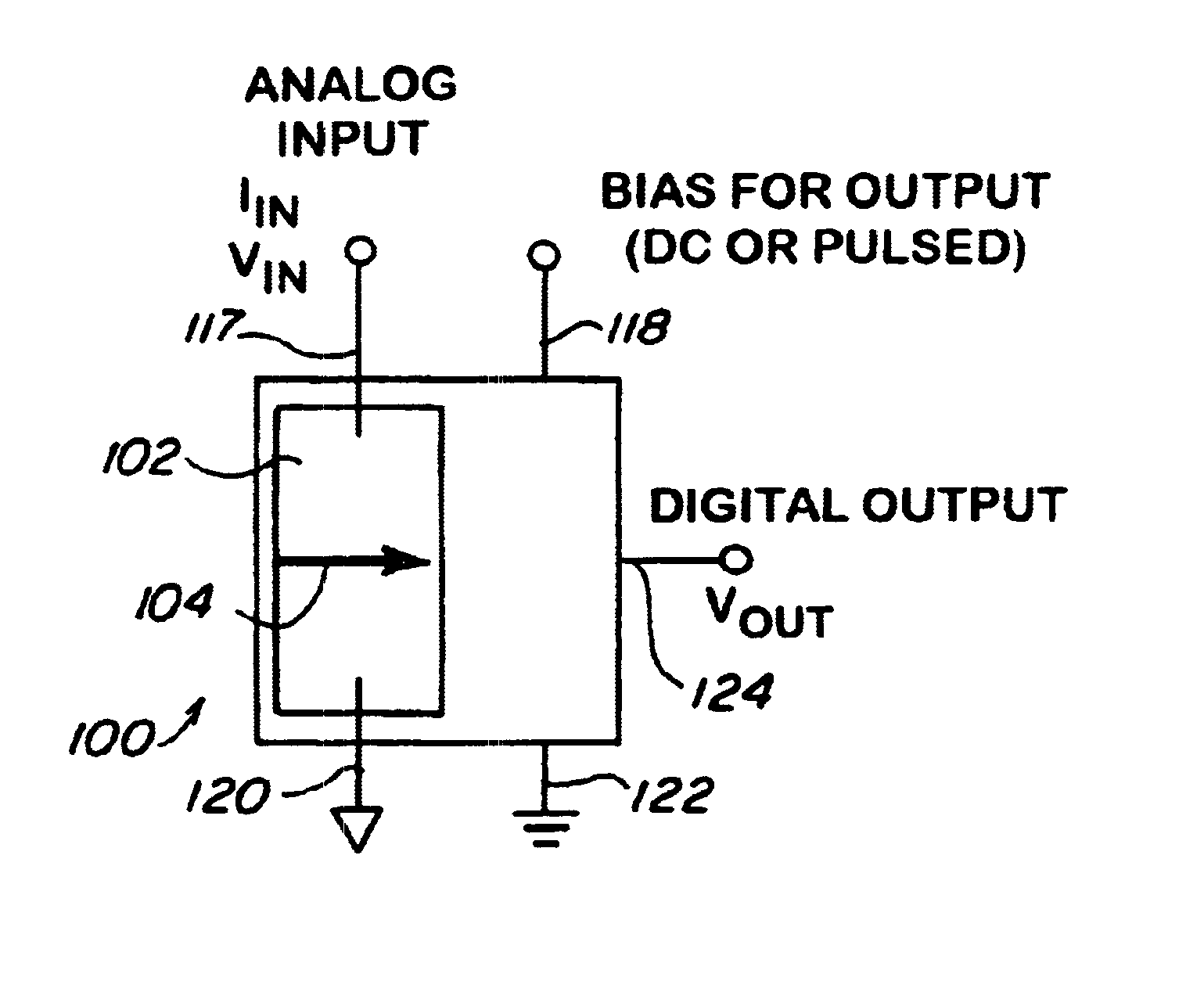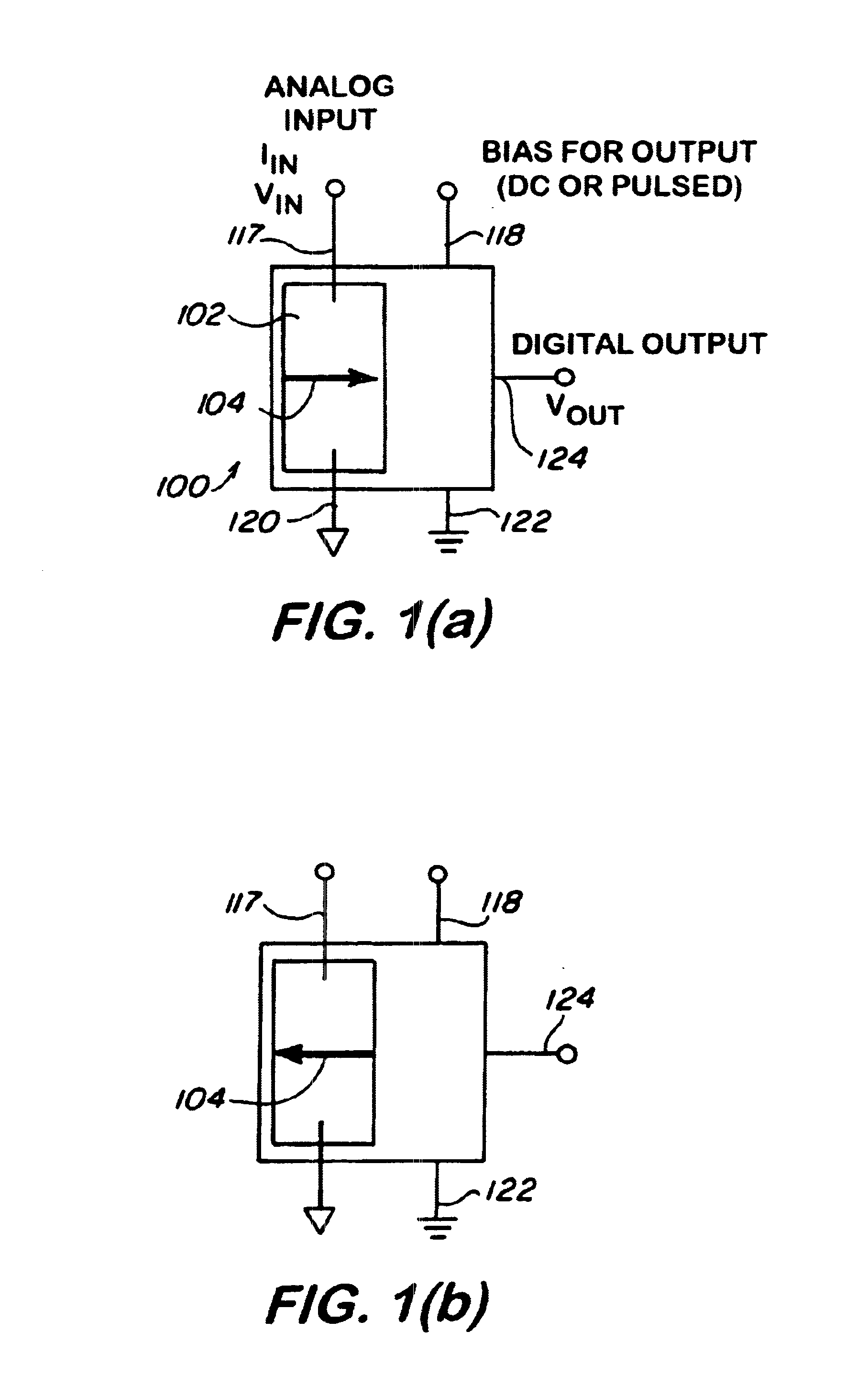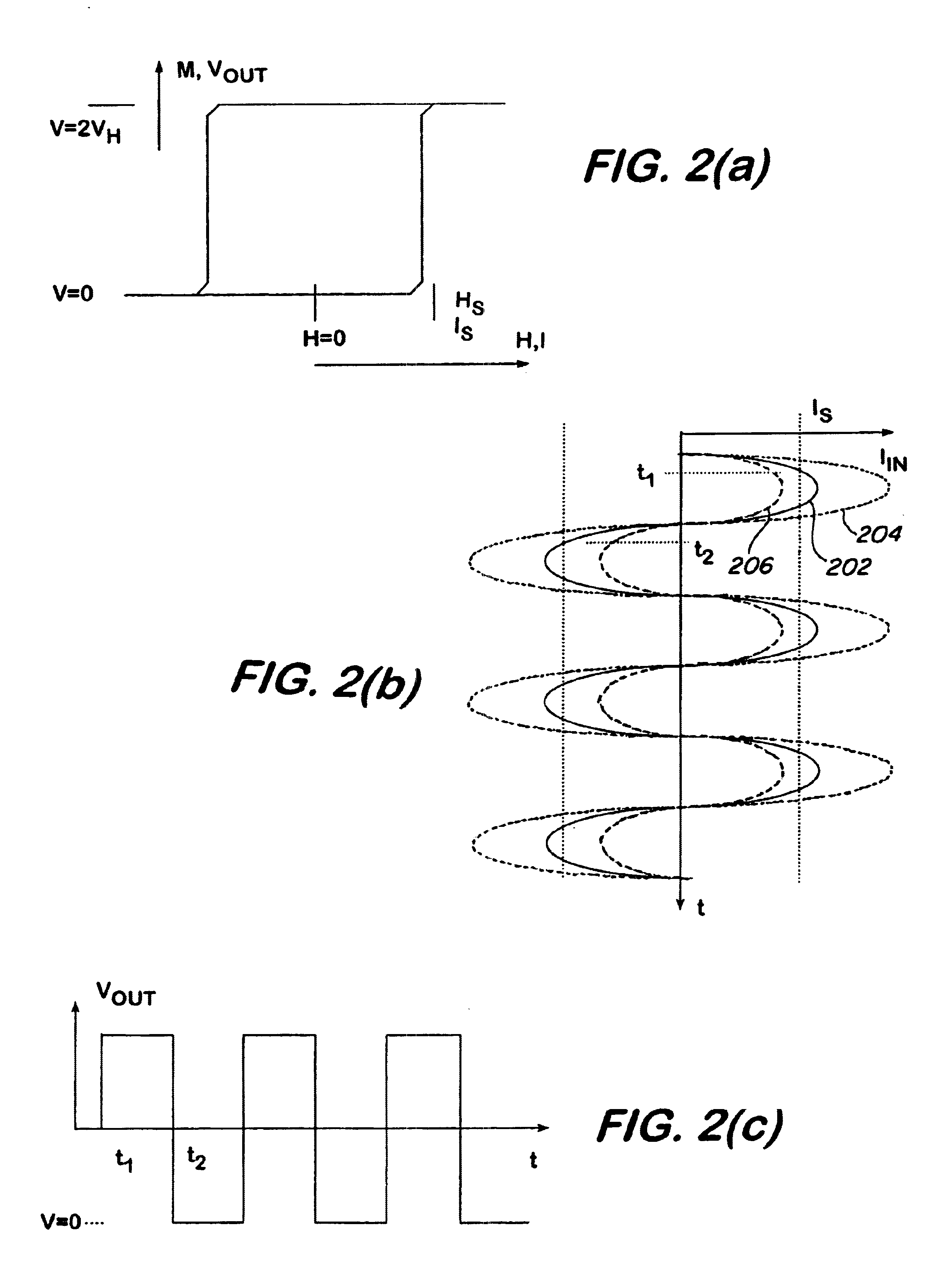Comparator, analog-to-digital converter and method of analog-to-digital conversion using non-linear magneto-electronic device
a non-linear magneto-electronic device and analog-to-digital converter technology, applied in the field of analog-to-digital converters, can solve the problems of imposing speed and power limits, discharging more power, and relatively low bandwidth and high operating power
- Summary
- Abstract
- Description
- Claims
- Application Information
AI Technical Summary
Benefits of technology
Problems solved by technology
Method used
Image
Examples
Embodiment Construction
Referring now to FIG. 1a, there is shown a schematic view of a generic magnetoelectronic device 100, defined as a device that incorporates a magnetic element 102 having an output voltage that depends on its magnetization state. Exemplary magnetic elements include spin valves, magnetic tunnel junctions (MTJs), and Hybrid Hall Effect (HHE) devices. The structure of the device 100 may include one or more ferromagnetic elements 102, but the operation of the device 100 typically depends on the manipulation of the magnetization 104 of the ferromagnetic element 102. The magnetization 104 has bistable states, with orientation to the right (positive x, FIG. 1a) or left (negative x, FIG. 1b). Binary information is associated with these bistable orientations. For example, "0" corresponding to left orientation and "1" corresponding to orientation to the right.
The magnetization orientation 104 is controlled by applying current I.sub.IN (or voltage V.sub.IN) to an input terminal of an integrated ...
PUM
 Login to View More
Login to View More Abstract
Description
Claims
Application Information
 Login to View More
Login to View More - R&D
- Intellectual Property
- Life Sciences
- Materials
- Tech Scout
- Unparalleled Data Quality
- Higher Quality Content
- 60% Fewer Hallucinations
Browse by: Latest US Patents, China's latest patents, Technical Efficacy Thesaurus, Application Domain, Technology Topic, Popular Technical Reports.
© 2025 PatSnap. All rights reserved.Legal|Privacy policy|Modern Slavery Act Transparency Statement|Sitemap|About US| Contact US: help@patsnap.com



